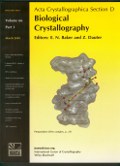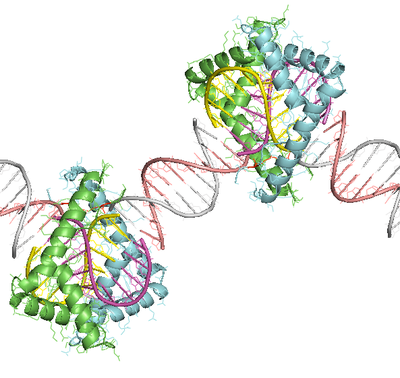The MACROM group works in the determination of the three-dimensional structure of biomolecules by using single-crystal X-ray diffraction techniques. Our main project is the study of the structure of DNA and its interactions with drugs, ions and proteins. It is well known that most genomes have a large quantity of DNA which does not code for proteins. Its function is unknown. Such non coding DNA is AT rich, often in the form of microsatellites with a repetitive sequence. In the last few years we have discovered that it may form Hoogsteen duplexes and coiled-coils. More recently we have found that some drugs may act as cross-linking agents for AT-rich DNA. In view of the latter results, we are exploring the interaction of minor groove binding drugs with 100% AT sequences. Such drugs have been used as anti-protozoal agents in the fight against malaria, leishmaniosis, tuberculosis associated with AIDS, etc. These studies will be complemented by the bioinformatics analysis of the distribution of 100% AT microsatellites and other abundant sequences in several genomes.
This group uses three complementary methodologies: crystallography, recombinant DNA techniques and bioinformatics.
Diffraction studies require the molecules to be crystallized from extremely pure samples. The best crystals are selected using an optical microscope and are frozen with liquid nitrogen. X-ray diffraction of these crystals is carried out in the Grenoble synchrotron. We look forward to work shortly in the ALBA synchrotron, near Barcelona. The diffraction obtained is processed with the aid of specific programs in order to determine the 3-D structure of the sample. This method has been used to study a large number of synthetic oligonucleotides, which have provided valuable information on new forms of DNA (Hoogsteen, recombination-like, superhelixes, etc.), as well as the interaction of DNA with drugs. Related studies are currently in progress. Our research is readily applicable to areas such as pharmaceuticals, new materials and nanotechnology.
We also study the structure and function of different proteins that interact directly or indirectly with AT-rich DNA. These studies require large quantities of pure protein. To this end, we incorporated recombinant DNA technology into our group since 1998. In this aspect, we have both the experience and the equipment needed for cloning and expressing proteins in prokaryotes and for purifying them and resolving their structure using x-ray diffraction. Furthermore, using directed mutagenesis techniques it is possible to obtain recombinant forms designed both to improve their crystallization and to study specific functional aspects. Our work in this area currently focuses on the study of human HMGA1. This protein is involved in many biological processes, including different types of cancer.

